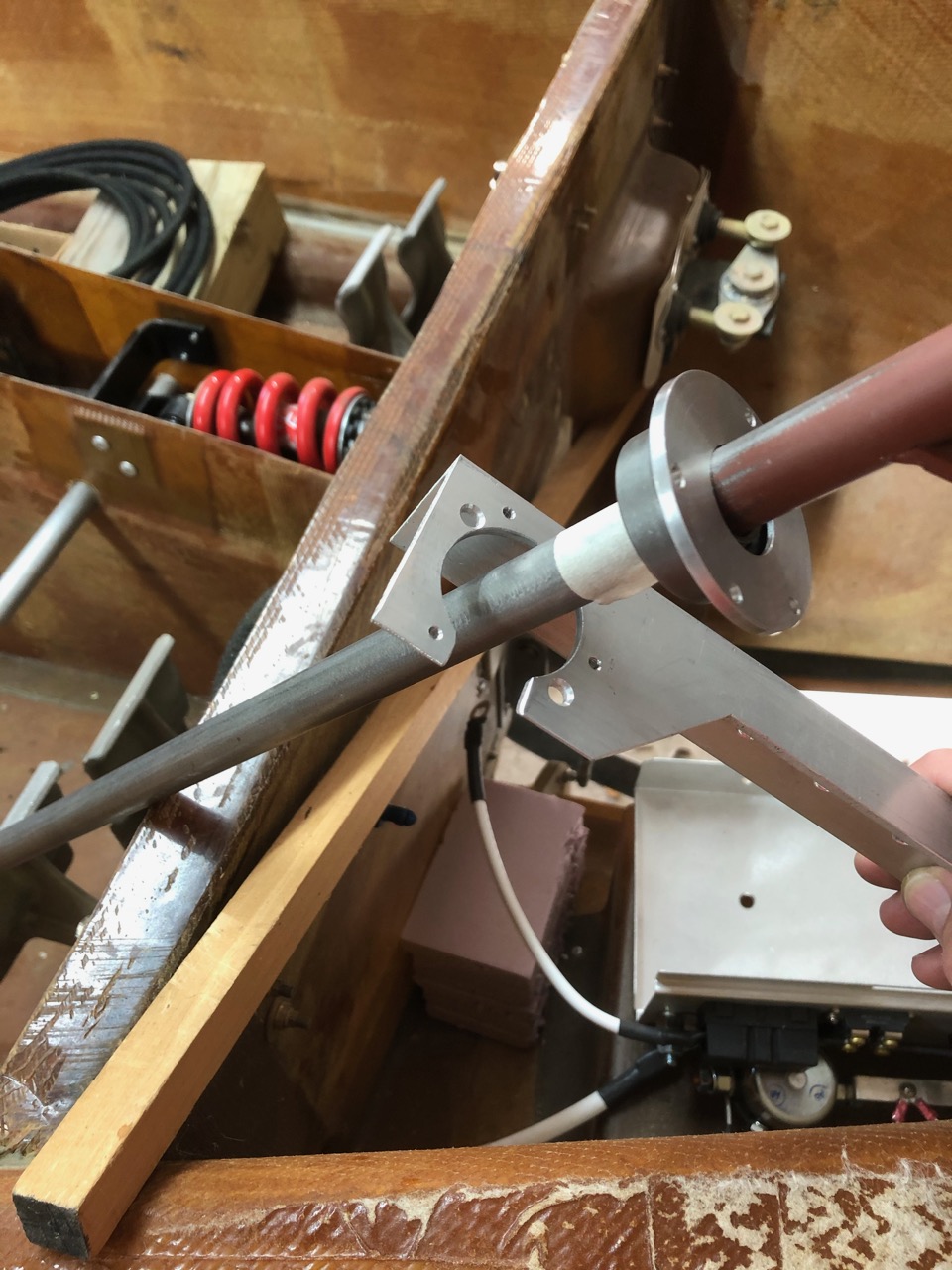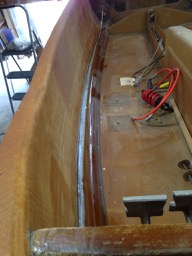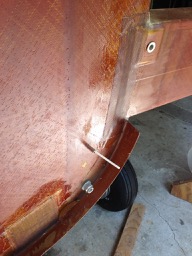Replaced the cheesy gearmotor-and-string contraption for aileron trim that came with the kit for an upgraded electric trim actuator. The factory sells this upgrade, which is a modified commercial linear actuator with an integral spring. This is very similar to the mechanism that Vance Atkinson devised and built for his Long-EZ. Very nice. It comes with a rod end that easily attaches to the aileron torque tube bell crank. Hard point installation is straightforward in the fuselage just aft of the whale tail and above the conduit.













































